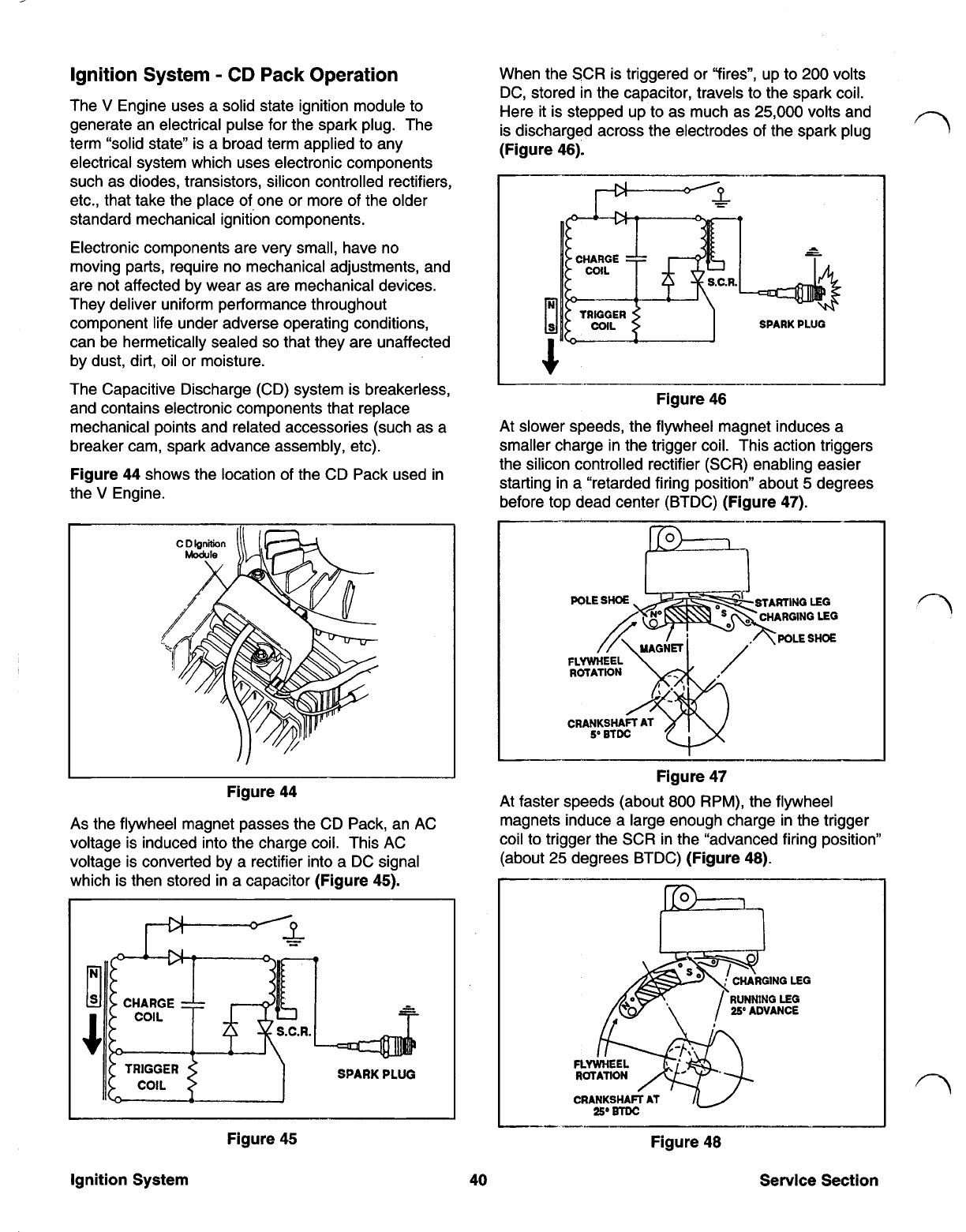Service Manual

Ignition System
CD
Pack
Operation
The
V
Engine uses a solid state ignition module to
generate an electrical pulse for the spark plug. The
term “solid state” is a broad term applied to any
electrical system which uses electronic components
such as diodes, transistors, silicon controlled rectifiers,
etc., that take the place of one or more of the older
standard mechanical ignition components.
Electronic components are very small, have no
moving parts, require no mechanical adjustments, and
are not affected by wear as are mechanical devices.
They deliver uniform performance throughout
component life under adverse operating conditions,
can be hermetically sealed
so
that they are unaffected
by dust, dirt, oil or moisture.
The Capacitive Discharge (CD) system
is
breakerless,
and contains electronic components that replace
mechanical points and related accessories (such as a
breaker cam, spark advance assembly, etc).
Figure 44
shows the location of the CD Pack used in
the
V
Engine.
Figure 44
As the flywheel magnet passes the CD Pack, an AC
voltage is induced into the charge coil. This AC
voltage is converted by a rectifier into a DC signal
which is then stored in a capacitor
(Figure 45).
Ignition System
Figure 45
40
When the SCR
is
triggered or “fires”, up to
200
volts
DC, stored in the capacitor, travels to the spark coil.
Here it is stepped up to as much as
25,000
volts and
is discharged across the electrodes of the spark plug
(Figure 46).
SPARK PLUG
Figure 46
At slower speeds, the flywheel magnet induces a
smaller charge in the trigger coil. This action triggers
the silicon controlled rectifier (SCR) enabling easier
starting in a “retarded firing position” about
5
degrees
before top dead center (BTDC)
(Figure 47).
POLE SHOE.
LEG
LEG
SHOE
Figure 47
At faster speeds (about
800
RPM),
the flywheel
At
magnets induce a large enough charge in the trigger
coil to trigger the SCR in the “advanced firing position’’
(about
25
degrees BTDC)
(Figure 48).
CRANKSHAFT
AT
25.”
BTDC
Figure 48
Service Section










